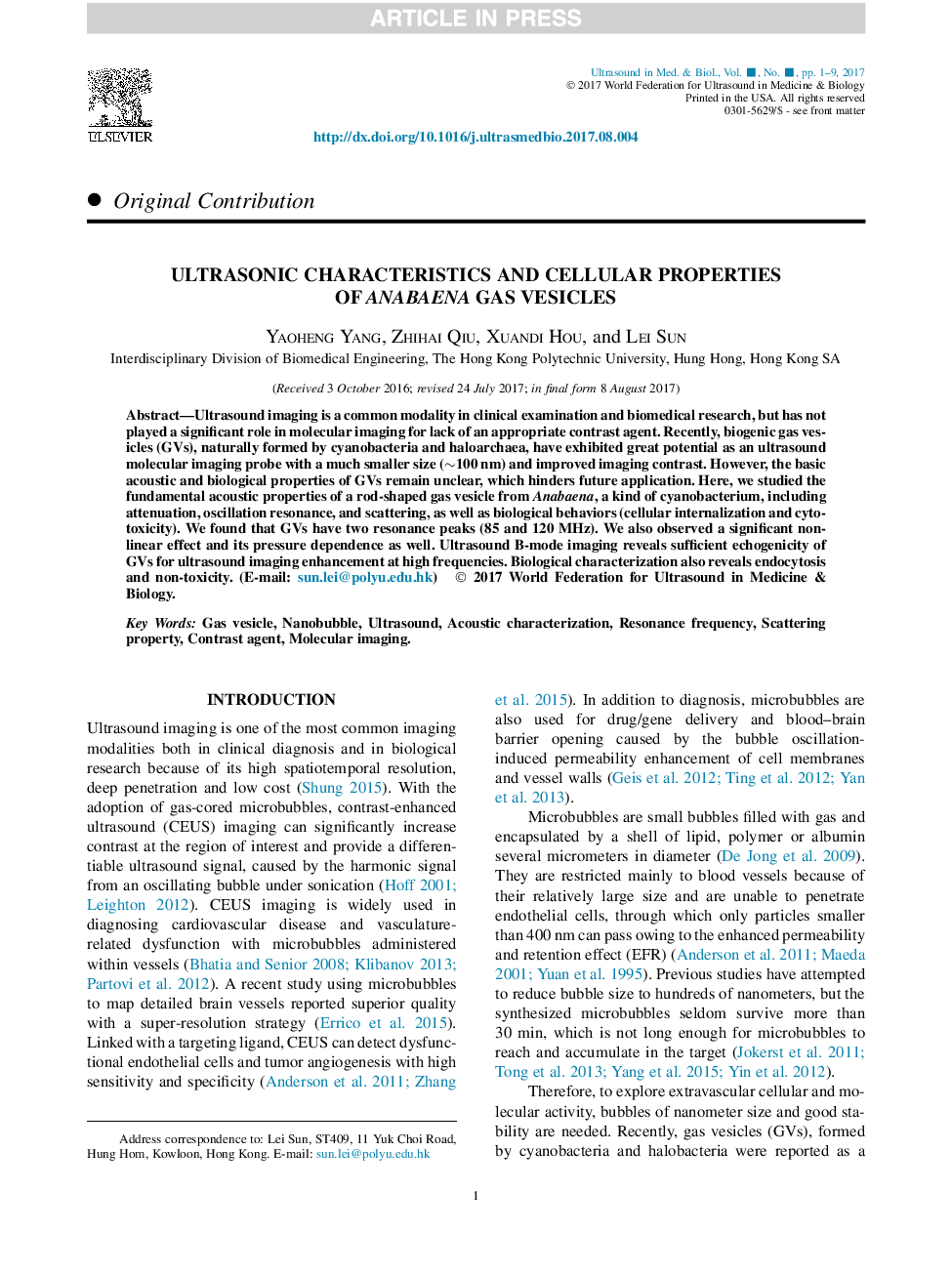| Article ID | Journal | Published Year | Pages | File Type |
|---|---|---|---|---|
| 8131472 | Ultrasound in Medicine & Biology | 2017 | 9 Pages |
Abstract
Ultrasound imaging is a common modality in clinical examination and biomedical research, but has not played a significant role in molecular imaging for lack of an appropriate contrast agent. Recently, biogenic gas vesicles (GVs), naturally formed by cyanobacteria and haloarchaea, have exhibited great potential as an ultrasound molecular imaging probe with a much smaller size (â¼100Â nm) and improved imaging contrast. However, the basic acoustic and biological properties of GVs remain unclear, which hinders future application. Here, we studied the fundamental acoustic properties of a rod-shaped gas vesicle from Anabaena, a kind of cyanobacterium, including attenuation, oscillation resonance, and scattering, as well as biological behaviors (cellular internalization and cytotoxicity). We found that GVs have two resonance peaks (85 and 120Â MHz). We also observed a significant non-linear effect and its pressure dependence as well. Ultrasound B-mode imaging reveals sufficient echogenicity of GVs for ultrasound imaging enhancement at high frequencies. Biological characterization also reveals endocytosis and non-toxicity.
Keywords
Related Topics
Physical Sciences and Engineering
Physics and Astronomy
Acoustics and Ultrasonics
Authors
Yaoheng Yang, Zhihai Qiu, Xuandi Hou, Lei Sun,
